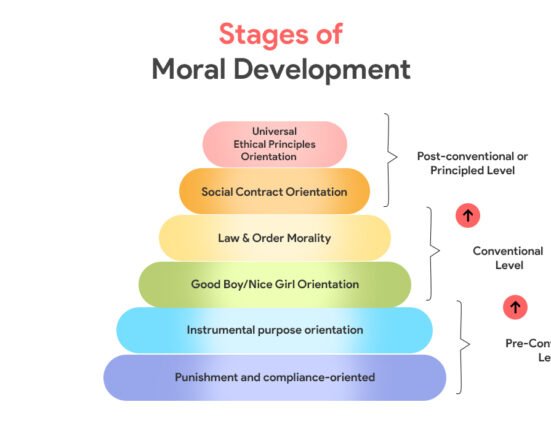Sigmund Freud (1856-1939) was an Austrian neurologist and psychologist, best known for being the founder of psychoanalysis. Although his theories about the human mind and therapeutic techniques for treating mental disorders are extremely controversial and contested by many later psychologists, his contribution to the field of psychology cannot be undermined. His ideas have been immensely influential, and have taken the world by storm by bringing in an entirely new perspective on the nature of the human psyche.
Read More: Father of Psychoanalysis: A Deep Dive into the Life of Sigmund Freud
His numerous case studies describing the ailments and treatment process of his many patients are still read by researchers and students training to be psychologists. Psychoanalysis, although modified and questioned by those who came after him, continues to be a dominant subfield within psychology. Let us take a look at some of the core concepts introduced by Freud, which characterise his idea of the human psyche.
1. The idea of the Unconscious Mind:
In Freud’s Psychoanalytic theory of personality, the unconscious refers to the complex mental activities that take place in a person’s mind without their awareness. It is a reservoir of feelings, thoughts, urges, fears, desires, impulses, and memories outside the conscious. According to Freud, a person’s unconscious can influence their behaviour even though they cannot report what is happening. An analogy that can help understand the unconscious is that of an iceberg.
The tip of the iceberg, which is the visible part, represents the conscious mind. But there is an enormous amount of ice that makes up the iceberg, which is submerged underwater. This part represents the unconscious mind. Most contents of the unconscious are considered unpleasant and unacceptable, such as painful memories, feelings of resentment and anger, and sexual desire. Thus, humans employ several defence mechanisms to prevent them from coming up to the surface.
2. Life and Death Instinct:
Freud, in his book “Beyond the Pleasure Principle”, concluded that all human instincts fall into two categories – life drives and death drives. Later, these were termed ‘Eros’ and ‘Thanatos’ respectively. The life drive, sometimes referred to as the sexual drive, deals with basic survival, pleasure, and reproduction. It focuses on the preservation of the life of the individual, as well as the whole human species.
It includes the instincts of thirst, hunger, pain avoidance, and the desire to engage in sex. The energy created by life instinct is known as ‘Libido’. On the other hand is the death drive. According to Freud, humans are also driven towards death and destruction. It can either get directed outwards and manifest as aggression and violence towards others, or it can also be directed inwards, in the form of self-harm and suicide.
3. The elements of Personality (Id, Ego, and Superego):
According to Freud, the human personality is a complex interplay of three components, namely – Id, Ego, and Superego. They work together to result in complex human behaviours. According to Freud, the Id is the primary component of personality and houses all the psychic energy of a person. It functions on the pleasure principle, which refers to the impulse for immediate gratification of all desires and needs.
If these needs are not satisfied, it creates anxiety. The Superego, on the other hand, works on the morality principle. It develops around the age of 5 and represents the internalised moral standards of society. It consists of conscience (one’s ideas of what is right and wrong, as told by parents and the society), and the ego ideal (what one aspires to be like).
The third component of personality is the Ego, which works on the reality principle. It balances the unchecked desires of the Id with the moral constraints of the Superego to satisfy a person’s wants and desires of a person in a societally appropriate and acceptable way. An example of the interaction of the three elements: In a scenario where a kid sees a chocolate bar in a shop that he wants, the id will urge him to just grab the chocolate from the shelf, but the superego will remind him that stealing is wrong and prevents him from doing that, and to balance the two, the ego will recommend that he should ask his parents to buy the chocolate for him.
Dive Deeper into the Concept of Id, Ego and Superego
4. Freudian Slips:
Freud believed that many of our thoughts, feelings, and emotions are repressed because they are too threatening and anxiety-inducing. These reside in the unconscious, but sometimes they can come up to the surface and make themselves visible. This happens through dreams or slips of the tongue, termed ‘Freudian Slips’. The medical term for it is ‘parapraxis’. Remember when in the TV show Friends, Ross accidentally blurts out Rachel’s name while getting married to Emily? That is a classic example of a Freudian slip.
5. Free Association:
Free association is a therapeutic technique used in psychoanalysis aimed at facilitating the emotional discovery of a client. It involves attempting to uncover the contents of the unconscious mind by sharing anything and everything that crosses the client’s mind, including fleeting thoughts, memories, images, words, daydreams, and ideas, without censoring or leaving anything out. After this, the therapist uses their expertise to analyse the contents of a person’s mind go beyond what they said and discover any hidden meanings stemming from the unconscious. It is sometimes also referred to as ‘stream of consciousness’ therapy, and forms the cornerstone of psychoanalysis.
Freud’s psychoanalytic theory of personality has been highly controversial. Despite that, several elements from his theory are still in use in therapeutic practice in modified forms and continue to guide the discipline of psychology. Which is why he is often referred to as the ‘father of Modern Psychology’.
References +
- https://www.britannica.com/biography/Sigmund-Freud
- https://www.webmd.com/balance/what-freudian-slip
- https://www.verywellmind.com/what-is-the-unconscious-2796004#:~:text=In%20Sigmund %20Freud’s%20psychoanalytic%20theory,that%20outside%20of%20conscious%20awareness.
- https://www.britannica.com/science/unconscious
- https://www.verywellmind.com/life-and-death-instincts-2795847
- https://www.verywellmind.com/the-id-ego-and-superego-2795951
- https://www.betterhelp.com/advice/psychologists/free-association-what-is-it-and-how-does-it-work/













Leave feedback about this